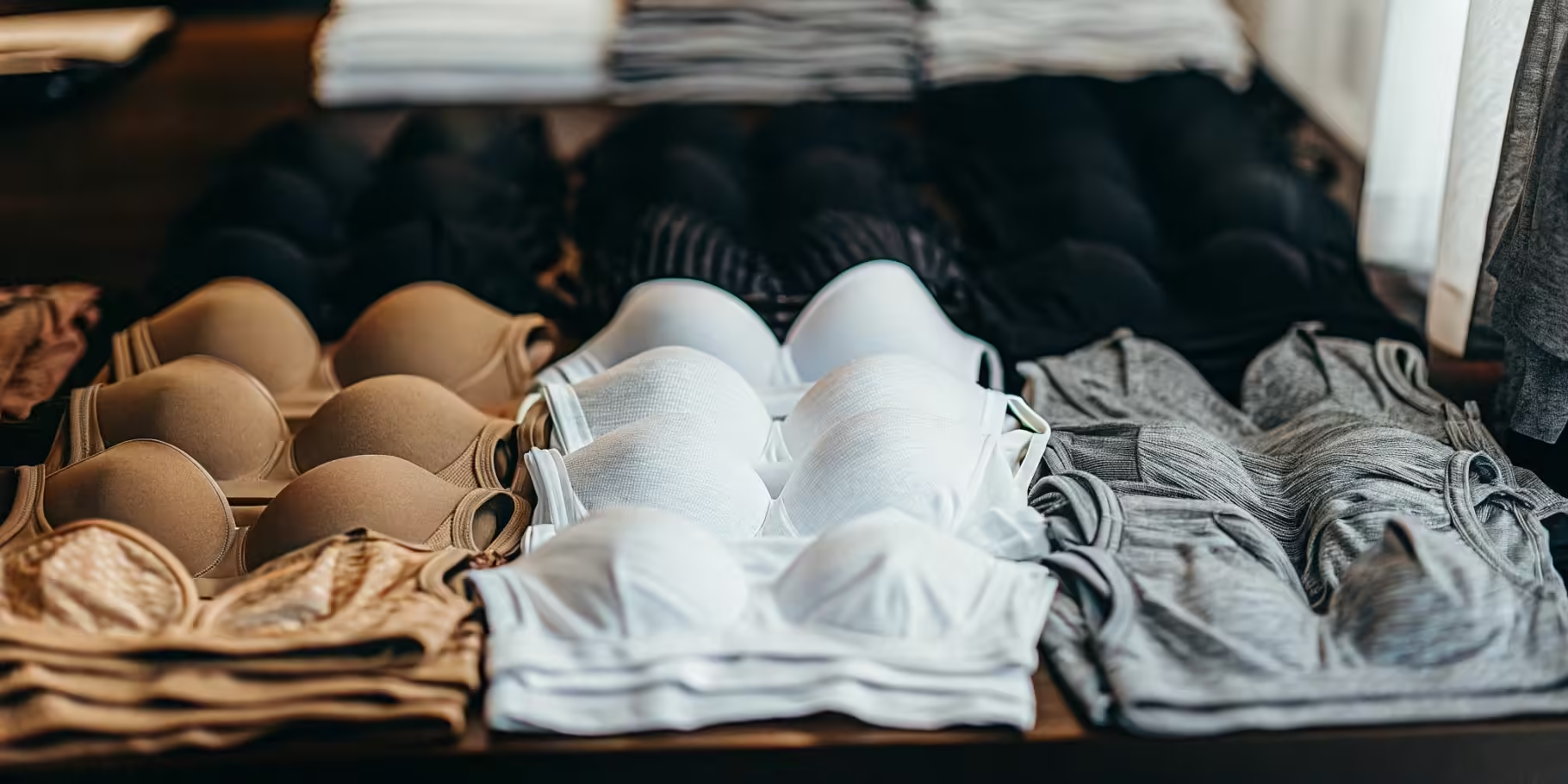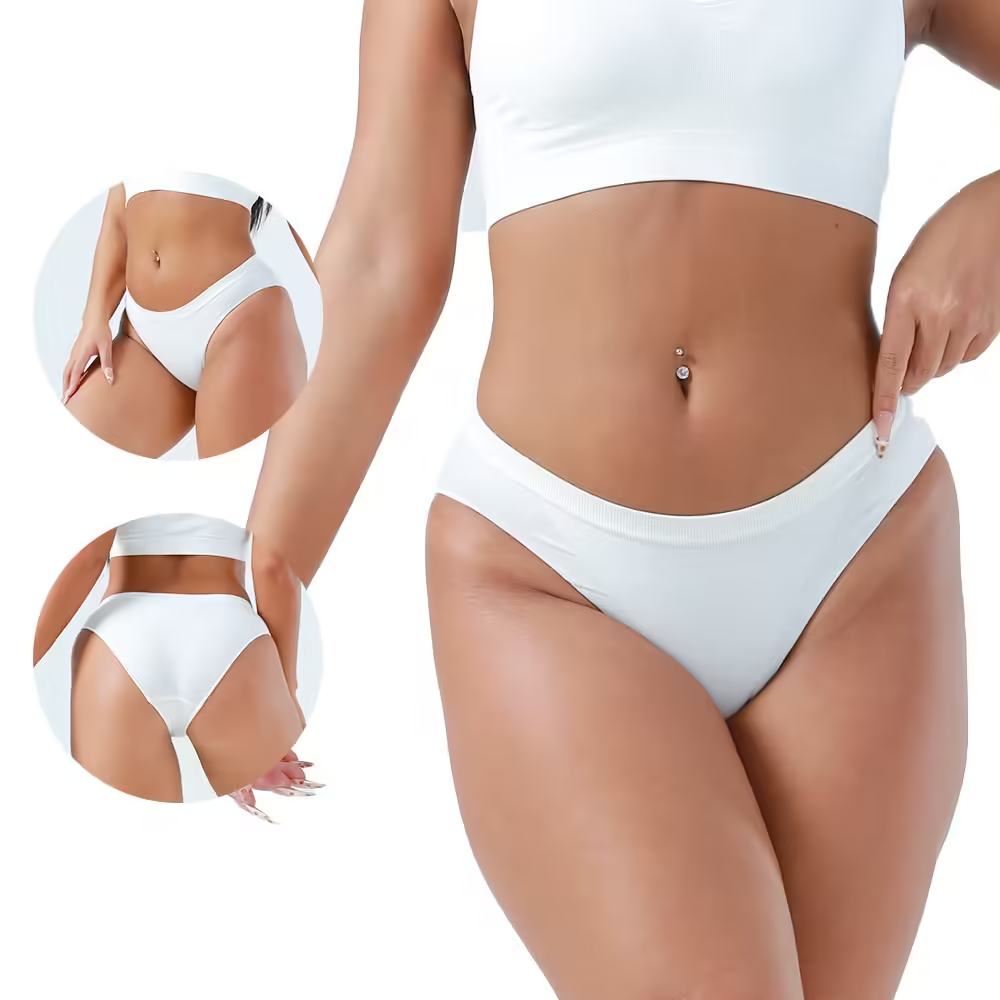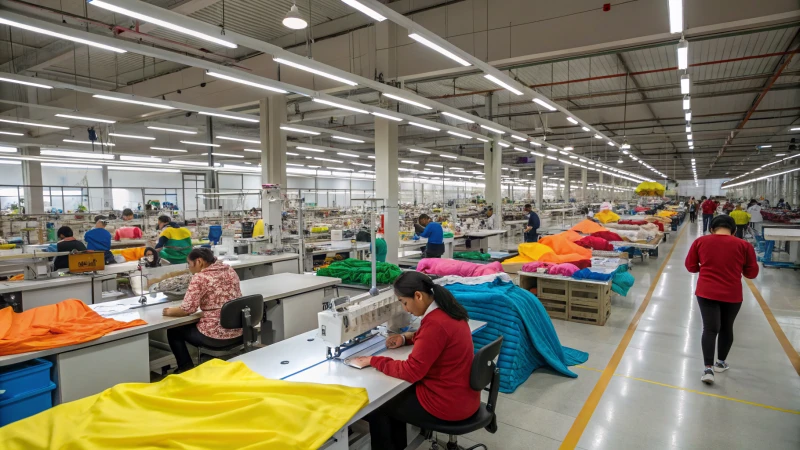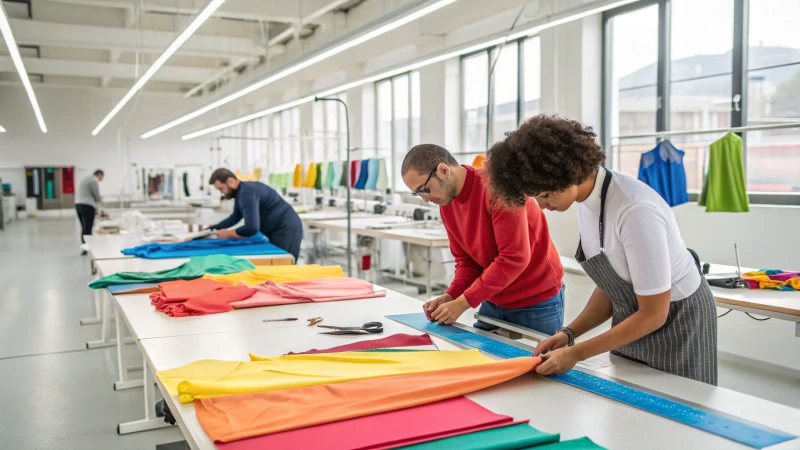
Have you ever tried finding the perfect thong, only to be frustrated by uncomfortable fits?
Creating custom thong underwear for various body types means tackling hurdles like inconsistent sizing, ensuring a good fit, adapting materials, and inclusive design. Solutions involve flexible sizing options, adjustable designs, choosing the right fabrics, and thorough product testing.
Thinking back to my own struggles with finding lingerie that fits just right, I can totally relate to the challenges involved in making inclusive thong underwear. From squeezing into something too tight or constantly adjusting straps that just won’t stay put, these aren’t just minor annoyances—they’re universal struggles many of us face. But there’s hope! Manufacturers are coming up with creative solutions, like flexible sizing and more adaptable designs. And those comfy fabrics we all love? They’re being tested rigorously to ensure they fit like a dream on every body shape. Let's dive deeper into how these challenges are being tackled to make our lingerie drawers a little more inclusive.
Custom thong sizing standards are universally consistent.False
Sizing standards vary globally, complicating custom thong production.
Flexible sizing systems enhance thong comfort for all body types.True
Flexible sizing allows better fit and comfort across diverse bodies.
How Does Sizing Affect Custom Thong Underwear Production?
Ever wondered how the perfect fit in custom thong underwear is crafted? It's all about sizing!
Sizing plays a crucial role in custom thong underwear production by dictating fabric requirements, shaping design tweaks, and ensuring a precise fit. This process demands adaptable patterns and innovative manufacturing methods to cater to every unique body shape.

The Role of Sizing in Fabric Selection
When I'm choosing fabric for custom thong production, size becomes a key player. I remember the first time I had to select materials for larger sizes—I realized just how much more fabric is required. This not only influences cost but also pushes me to think creatively about material choices. Sometimes, opting for elastic materials is essential to keep everything snug and comfy.
Design Adjustments for Varied Sizes
Designing thongs isn't just about aesthetics; it's a puzzle of engineering for me. I find that each size carries its own challenges—from tweaking waistbands to adjusting the width of the thong strip. Creating patterns that fit various body types is like solving a complex yet rewarding equation, always striving to balance beauty with practicality.
Manufacturing Challenges and Solutions
In my experience, the challenge of producing custom thongs lies in marrying efficiency with flexibility. I lean on advanced technology1 to ensure that designs scale accurately without losing quality. It's a balancing act—one where every piece must fit together seamlessly.
| Size | Waist (inches) | Hip (inches) |
|---|---|---|
| S | 26-28 | 34-36 |
| M | 28-30 | 36-38 |
| L | 30-32 | 38-40 |
Ensuring Inclusive Design
For me, inclusivity is not just a goal but a necessity. Testing products across different body types opens my eyes to how diverse our needs are. I remember feeling overjoyed when feedback showed that our thongs made wearers feel confident and comfortable. This iterative process of design and testing keeps me constantly learning.
The Importance of Fit Testing
Fit testing is my ultimate check before diving into full-scale production. Trying various sizes on actual users and refining patterns based on their feedback ensures that each piece meets our comfort standards2. This proactive step helps me catch potential sizing issues early on, making sure we deliver the best fit possible.
Larger sizes require more elastic materials.True
Elastic materials are needed for larger sizes to ensure comfort and fit.
Fit testing is optional in thong production.False
Fit testing is crucial to ensure each size meets comfort standards.
How Does Fabric Influence Comfort and Fit?
Ever tried wearing a sweater in summer? That’s fabric’s work! Choosing the right material can make or break your comfort.
The right fabric can make all the difference in comfort and fit by enhancing breathability, stretch, and texture. Breathable fabrics keep you cool in the heat, while stretchy ones fit snugly to your shape.

The Influence of Fabric on Comfort
Fabric's role in comfort cannot be understated. I remember a time when I wore a polyester shirt to an outdoor event in July. Big mistake! The lack of breathability left me feeling like I was wearing a sauna. That's when I learned to appreciate the cooling power of cotton and linen. These breathable materials allow air circulation, keeping you cool in hot weather and reducing skin irritation. In contrast, synthetic fabrics can trap heat, making them less suitable for humid climates.
Stretch and Flexibility
Have you ever tried doing yoga in jeans? I wouldn’t recommend it! That's where stretchy fabrics like spandex come to the rescue. They provide that perfect snug fit without cutting off circulation, ensuring comfort during exercise or any active endeavor. Whether I'm going for a run or just chasing after my kids, these materials adapt to different body shapes, offering a custom fit that enhances mobility. Consider how stretch fabrics improve workout gear3.
Texture and Skin Sensation
The texture of fabric affects how it feels on the skin and is often as important as how it looks. Soft fabrics like silk or microfiber provide a gentle touch, enhancing comfort against the skin. Rough textures can lead to irritation and discomfort, especially for those with sensitive skin. Understanding fabric textures4 helps make informed choices.
Fabric Adaptability in Design
Thanks to modern fabric technology, designs have become more adaptable for different body types. Designers cleverly use blends like cotton with elastane to achieve the perfect balance between comfort and fit—providing both breathability and stretch ideal for everything from workwear to casual clothes. Examine the advantages of blended fabrics5.
| Fabric Type | Comfort Level | Ideal Use |
|---|---|---|
| Cotton | High | Everyday wear |
| Linen | High | Summer attire |
| Spandex | Moderate | Activewear |
| Silk | High | Loungewear |
| Polyester | Low | Outerwear |
Emotional Connection to Fabrics
When I wrap myself in a soft wool blanket on a chilly evening, it’s more than just warmth—it's comfort on an emotional level too. Certain fabrics evoke emotional responses that affect comfort perception; soft materials might make us feel safe while crisp ones can invigorate us. The connection between fabric and emotions6 plays a significant role in overall comfort.
Understanding these aspects of fabric has greatly enhanced my ability to select clothing that not only looks good but feels great too. This knowledge is crucial whether you're buying off the rack or designing custom pieces.
Overall, choosing the right fabric impacts every aspect of how clothes fit and feel, influencing both physical comfort and emotional satisfaction—a journey worth taking for anyone looking to enhance their wardrobe experience.
Cotton is more breathable than polyester.True
Cotton allows air circulation, making it more breathable than polyester.
Spandex restricts movement in activewear.False
Spandex provides flexibility, enhancing movement rather than restricting it.
Why Is Inclusive Design Important in Lingerie?
Ever found yourself in a lingerie store, wishing for options that truly fit your body and identity? You're not alone.
Inclusive design in lingerie ensures everyone feels seen and comfortable, addressing diverse body types and identities while promoting body positivity and accessibility.
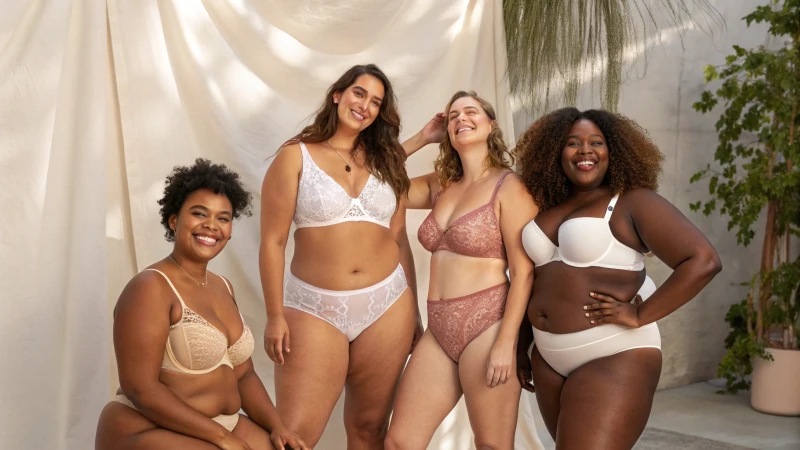
The Role of Inclusive Design in Lingerie
I remember the frustration of shopping for lingerie and feeling like none of it was made for me. Inclusive design changes that narrative by not only offering a wider range of sizes but also understanding the nuances of different body types, identities, and abilities. It's about more than just numbers on a tag; it's about feeling understood and valued. Brands embracing inclusive sizing7 create a welcoming environment for everyone, transforming shopping into a positive experience rather than a chore.
Importance of Representation
Representation in lingerie isn't just a marketing strategy—it's a powerful tool for change. Seeing diverse models in advertisements makes a huge difference in how we perceive ourselves and our worth. I remember how validating it was to see someone who looked like me in a campaign, and it uplifted my self-esteem. This impact of representation8 goes beyond personal feelings; it can shift societal norms and redefine beauty standards.
Accessibility and Comfort
For many, traditional lingerie doesn't cater to unique needs such as disabilities or medical conditions. I once had a friend who struggled to find comfortable options post-surgery, highlighting the necessity for adaptive designs. Inclusive lingerie incorporates features like adaptive closures or specialized support, ensuring everyone has access to both comfort and style through design innovations9.
Balance Between Customization and Production
Creating inclusive lingerie isn't without its challenges. Balancing the need for customization with mass production demands innovation in materials and design. Think about flexible sizing systems or adaptive materials—these help brands provide inclusivity without sacrificing efficiency.
| Design Element | Benefit |
|---|---|
| Flexible Sizing | Accommodates diverse bodies |
| Adaptive Closures | Enhances accessibility |
| Diverse Fabrics | Improves comfort |
The Broader Impact on Fashion Industry
The fashion industry is undergoing a transformation, thanks to the push for inclusive design. It's more than just a trend; it's a movement challenging outdated norms and sparking innovation. As consumers, we have the power to support brands that prioritize diversity and inclusivity, aligning with our values. The journey towards inclusive design in lingerie is reshaping the fashion world, highlighting its importance within the fashion industry10.
Understanding these dynamics helps us make informed choices that reflect our commitment to inclusion and equality. Let's continue to champion these changes for a better, more inclusive fashion landscape.
Inclusive design in lingerie improves body positivity.True
It ensures diverse representation and comfort, boosting self-esteem.
Traditional lingerie always meets the needs of all wearers.False
Traditional designs may lack adaptive features for diverse needs.
How Are Manufacturers Testing Products for Diverse Body Types?
Ever wondered how your favorite clothes fit so perfectly, no matter your shape? Let's explore the fascinating world of product testing for diverse body types.
Manufacturers test products for diverse body types using advanced technologies like 3D scanning, data-driven sizing systems, and inclusive design prototypes. These methods ensure comfort, fit, and accessibility for a wide range of consumers.

Embracing Advanced Technologies
I remember the first time I slipped into a pair of jeans that seemed tailor-made for me—it was like they were designed just for my body. Turns out, those jeans probably benefited from amazing tech like 3D body scanning. Manufacturers use this to gather precise measurements from all kinds of body shapes, ensuring products fit like a dream. These scans help designers understand the unique nuances of different bodies, making sure everyone feels included and comfortable in their clothing. And it's not just about measurements; data analytics play a crucial role too, identifying common fit issues so they can be corrected before the final product hits the shelves.
Inclusive Sizing Systems
Have you ever struggled to find your size because the standard small, medium, or large just didn't cut it? I know I have. This frustration is why many companies are moving towards data-driven sizing systems that go beyond the usual categories. These systems use detailed data to create sizes that reflect the beautiful diversity among all of us. Imagine browsing a sizing chart that takes into account bust, waist, and hips, offering more options that feel just right.
| Size | Bust (inches) | Waist (inches) | Hips (inches) |
|---|---|---|---|
| A | 32-34 | 24-26 | 34-36 |
| B | 34-36 | 26-28 | 36-38 |
| C | 36-38 | 28-30 | 38-40 |
Prototyping and Feedback Loops
I once participated in a focus group for a new clothing line aimed at diverse body types. The sense of being heard and contributing to something inclusive was empowering. By creating prototypes and gathering feedback from people with various body types, companies can tweak designs to better meet everyone's needs. This ongoing feedback loop is crucial for continuous improvement, ensuring products evolve to remain relevant and effective.
Collaborative Design Processes
It's amazing to see how collaboration is at the heart of creating inclusive designs. Designers specializing in adaptive products are increasingly in demand. They bring unique expertise to the table, ensuring products aren't just functional but also visually appealing to a broad audience. These collaborative processes often involve workshops and focus groups with people like you and me to gain insights and innovate11. It's not just about making products better—it's about making everyone feel seen and valued.
3D body scanning captures unique body shape nuances.True
3D scanning provides precise measurements for diverse body shapes.
Traditional sizing systems are more accurate than data-driven ones.False
Data-driven systems reflect consumer diversity better than traditional ones.
Conclusion
Producing custom thong underwear for diverse body types involves challenges like sizing inconsistencies, comfort, and fabric adaptability. Solutions include flexible sizing, adjustable designs, and thorough product testing.
Discover the latest technology used to improve manufacturing processes, ensuring precise sizing and quality control. ↩
Learn why fit testing is vital for ensuring custom garments meet comfort and quality expectations. ↩
Stretch fabrics offer enhanced flexibility and movement, making them perfect for activewear. They adapt to various body shapes, providing a comfortable fit during exercise. ↩
Exploring fabric textures helps identify gentle options for sensitive skin, reducing irritation and enhancing comfort in everyday wear. ↩
Blended fabrics combine the best properties of multiple materials, offering a balance of breathability and stretch for improved comfort and fit. ↩
Different fabrics can evoke specific emotional responses, influencing how we feel when wearing them and enhancing overall comfort. ↩
Learn how inclusive sizing enhances shopping experiences for diverse consumers. ↩
Discover how diverse representation in media boosts self-esteem and influences societal norms. ↩
Explore how adaptive clothing designs meet the needs of individuals with specific requirements. ↩
Understand how inclusive design is reshaping fashion industry norms. ↩
Learn about inclusive design principles that ensure products are accessible and functional for all body types. ↩

